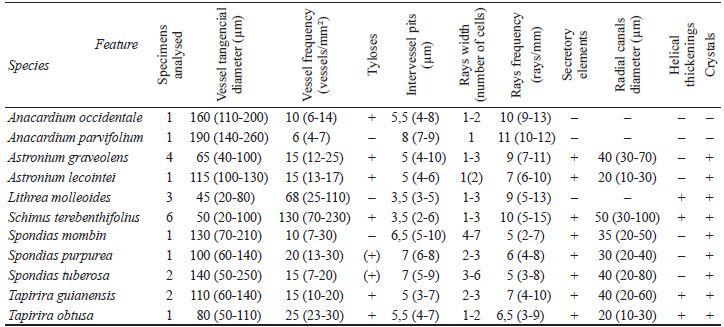RESUMO
Estudos antracológicos têm tido avanço significativo nos trópicos nas últimas décadas. As bases teóricas e metodológicas da disciplina estão bem estabelecidas, entretanto, existe ainda uma forte demanda por material comparativo de referência visando melhorar a acurácia nas determinações taxonômicas, tanto em estudos paleoecológicos e paleoetnobotânicos como para contribuir com o controle da produção ilegal de carvão vegetal. Este trabalho apresenta descrições da anatomia do lenho carbonizado de 11 espécies de Anacardiaceae, em seis gêneros nativos do Brasil (Anacardium occidentale, Anacardium parvifolium, Astronium graveolens, Astronium lecointei, Lithrea molleoides, Schinus terebenthifolius, Spondias mombin, Spondias purpurea, Spondias tuberosa, Tapirira guianensis e Tapirira obtusa). Elas são caracterizadas por vasos de arranjo difuso, solitários e múltiplos, algumas vezes com tiloses e espessamentos espiralados; placas de perfuração simples, pontoações intervasculares alternas, pontoações raio-vasculares maiores que as intervasculares; raios heterocelulares, podendo apresentar canais radiais e cristais; fibras septadas com pontoações simples ou aréolas reduzidas. Os resultados obtidos são similares a descrições prévias de anatomia da madeira das mesmas espécies ou gêneros. Ainda assim, a identificação de carvões é muito mais eficiente quando as amostras desconhecidas são comparadas a equivalentes atuais carbonizados, ao invés de lâminas finas.
Palavras-chave:
antracologia; arqueobotânica; carvão; paleoecologia; conservação da natureza; anatomia da madeira






